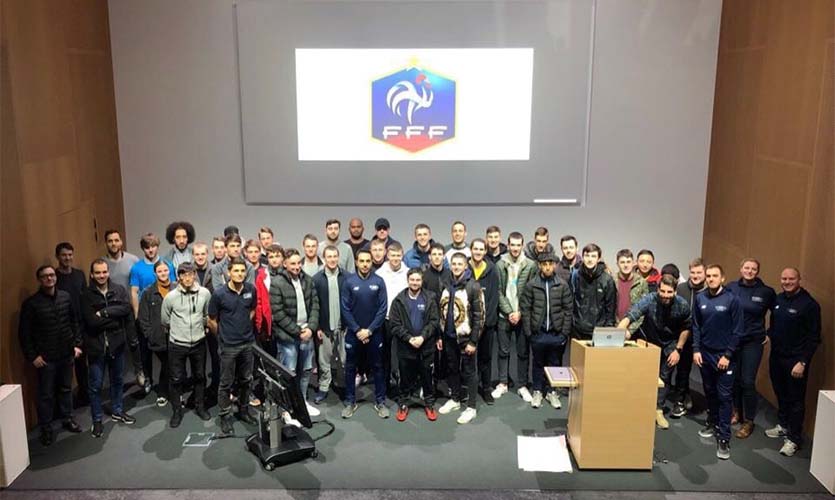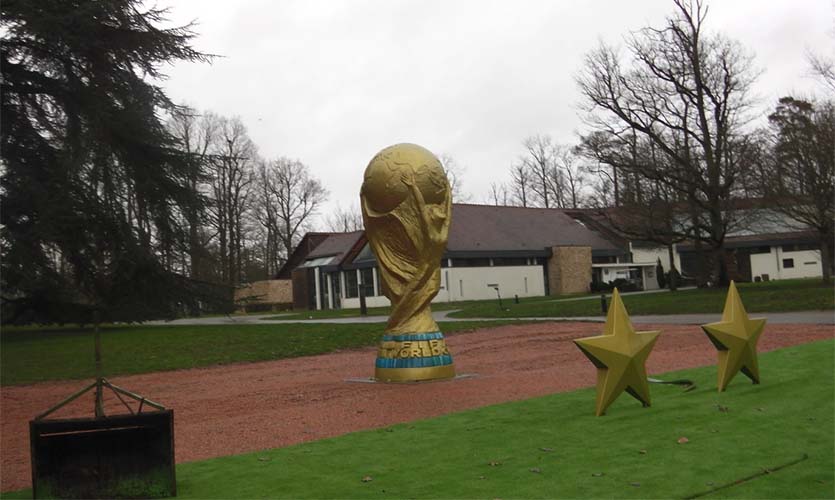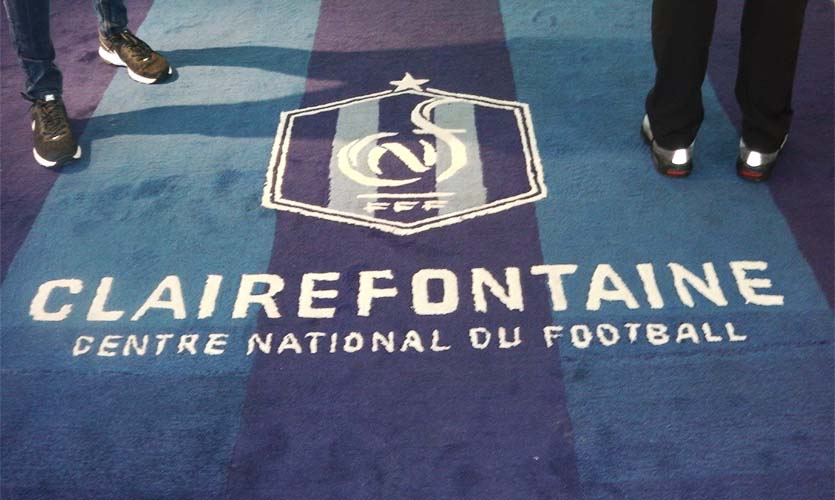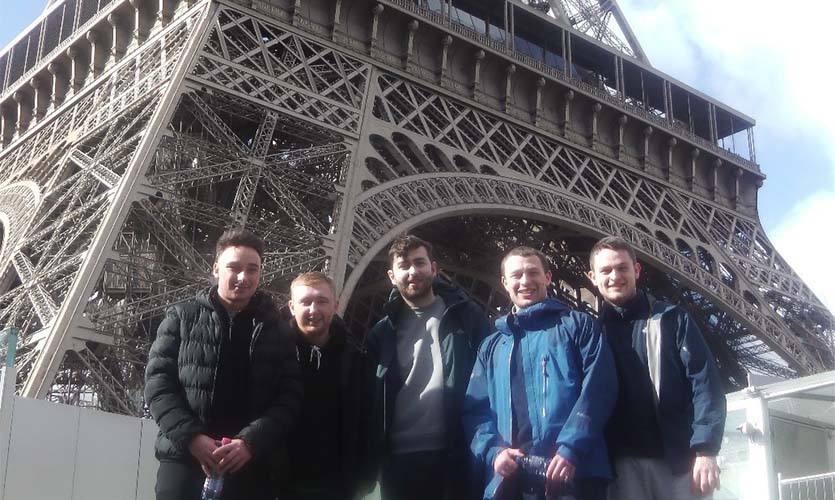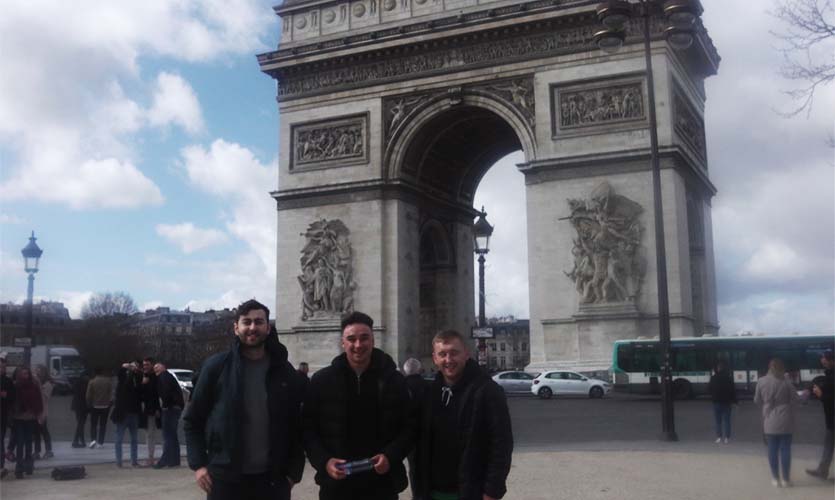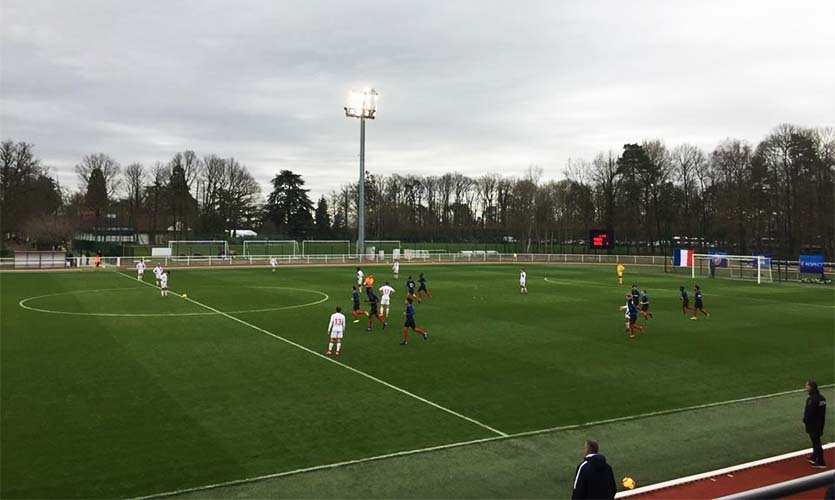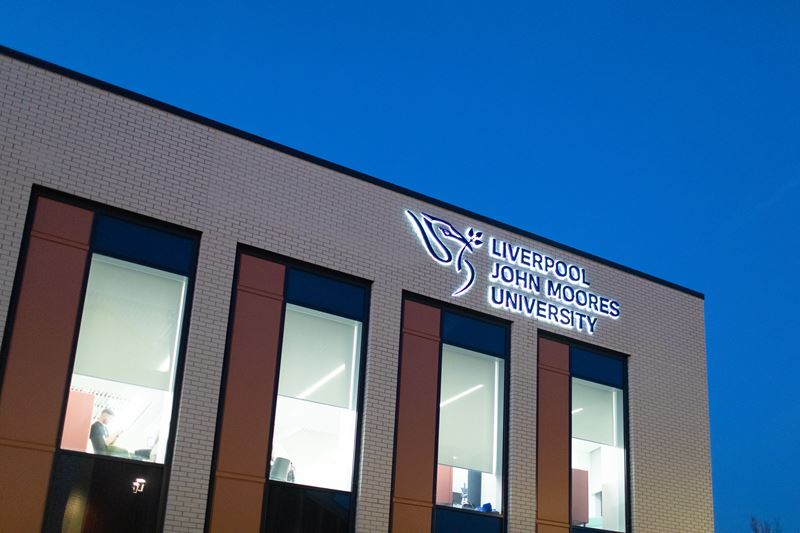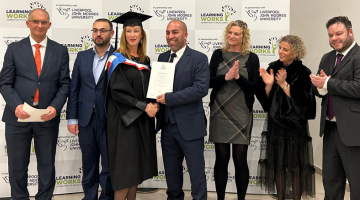A trip to Clairefontaine
By Sam Lee
Previous years have seen the students travel to Holland, Germany and Spain. This year, we were lucky enough to be given the opportunity to stay in Paris for four days and visit the home of the France Football Federation (FFF) in Clairefontaine. The fact that we were staying in one of the most famous cities in the world, coupled with the reality that France are the current World Champions made this trip incredibly tantalising.
Our plan for the week was as follows: arrive in Paris late Monday evening, spend the day (9.00am – 5.00pm) at the FFF Headquarters on Tuesday and Wednesday and then leave late afternoon on Thursday, giving us some free time to explore Paris beforehand.
Spending time with the France Football Federation
Tuesday
Our time at the FFF Headquarters on Tuesday was spent mainly being shown around the incredible facilities by Barthelemey Delacroix (Bart), one of the sport scientists at the FFF. We were shown the lecture theatres where coaches/sport scientists would give presentations to players, the offices of all the support staff at the FFF and the vast array of pitches on show at the facility, the most impressive of which is pictured above. From the picture you can also see how remote the facility was, creating a very peaceful and quiet atmosphere, allowing full focus on the football.
Just prior to lunch involved an amazing tour of the house where the French First Team players stay during their time with the Federation. This was fascinating. We were able to see how these elite players lived during the time with their national team, where they held their meetings, where they ate, where they went to the gym, etc. The tour was also guided by the Head of Performance at the FFF, Gregory Dupont, whom we could direct our questions at, as well as receive lots of information on how he treats the players, for example, their gym routines and their nutrition. It was truly incredible to gain this level of insight into a professional sporting environment.
We then stopped for lunch at the cafeteria, where we were given a broad selection of food that was specifically made for the French national team players. Even when we were on a break, we could see the fine level of detail that went into treating these expert players. We were completely immersed in the elite environment.
Finally, our Tuesday at Clairefontaine ended with three presentations from staff at the FFF, including talks on the optimisation of performance from both a psychological and physiological outlook and also a talk from the head coach of the France U18s, Jean-Luc Vanucchi. Once again, we were provided with the chance to ask industry professionals, who work for the World Cup winners, any questions we had relating to football. The talks were very interesting as we were given one final injection of insight into the behind-the-scenes at the FFF before we went back to Paris for the evening, for example, we learned how they set out to mentally and physically prepare their players to enhance performance, as well as the identity of the French team from U16s to the First Team.
Wednesday
We began our Wednesday at Clairefontaine watching France U17s vs Denmark U17s, which we made notes on and analysed, as we were told that a group of us would be presenting our findings, along with other data collected by the sport scientists, back to the head coach later that day, which everyone was looking forward to.
After another lunch at the cafeteria, the analysis group occupied one of the sports science offices for a couple of hours to set about analysing the match using physical performance data which Bart collected during the game. We were also shown how to use specific software and the proper techniques to analyse matches this way, which was highly intriguing. After two hours or so, we had our report and we presented it to the coach and the rest of the group, in one of the lecture theatres. Bart did the main presentation, whilst we came in with extra points that we found during the analysis phase. This was probably the highlight of my trip from an educational standpoint; not only did we get to watch the match, but we were also able to see first-hand how an industry professional might present a report to a coach and experience presenting to a head coach ourselves.
It isn’t all about work
Whilst the main essence of our field trip revolved around advancing our knowledge surrounding the industry of sports science in an elite setting, we also had lots of spare time for socialising. We were lucky enough to travel on a Champions League week, which meant, in the evenings, we could go into the centre of Paris and watch the matches in local bars, giving us a chance to explore the Paris night life. We were even more lucky to be in Paris at the same time that Paris-Saint Germain (PSG) were playing Manchester United. Watching PSG get knocked out by an English club, whilst surrounded by Parisians, was an experience that I’ll never forget.
Thursday also provided us with lots of time around Paris. A group of us travelled via the Metro to the Eiffel Tower and The Louvre. We were able to walk around Paris for a couple of hours too, which was such a beautiful city. On the way back to our hotel, a small number of us rode electric scooters that are heavily popular in Paris. Riding around the streets of Paris on an electric scooter with my mates was unforgettable. Overall, I believe the trip really bonded us as a year group as we spent so much time together.
The overall experience
I really can’t quite believe how amazing this field-trip was, it is an incredible perk of being on this course. We gained experiences and memories in just four days that will be with us for a lifetime, it was truly priceless. To be able to travel to the home of the best national team in the world, and meet and listen to the people that helped them get there, is a once-in-a-lifetime adventure. I am sure the information that we have heard, seen, and discussed during our time in Paris and Clairefontaine has motivated us and will propel us forward in our pursuit of graduating and obtaining employment in our chosen disciplines.
by Henry Ogden
The cohort of science and football students from levels 5 and 6 had a remarkable opportunity to visit the training base for the French national team, The Clairefontaine Academy often referred to as INF Clairefontaine. The academy is one of twelve elite academies located in and around France that are supervised by the French Football Federation (FFF) and is located 50km southwest of the capital. The recent World Cup winners of Russia 2018, the second time the nation has won the most famous prize in football since hosting the competition in 1998. INF Clairefontaine has hosted the development of some of the greatest names within the sport such as France's all-time leading goal-scorer Thierry Henry, Nicholas Anelka and more recently Kylian Mbappe. The academy centre was opened in 1988.
The training base has been open for over twenty years, although there are current changes ongoing in reinventing their attitude to the world of sports science. One possible reason for Didier Deschamps’ and the national team’s triumphs in the Luzhniki Stadium back in July, could be the influence of 46-year-old Gregory Dupont, now head of performance for the national team who spent his playing career at the likes of Amiens and Dieppe. It was Gregory who co-lead the tour along with LJMU staff member Julian Louis, who is also head of nutrition for the national team.
Dupont was appointed head of sports science for Celtic in 2007 before moving back to his native France to work for Lille OSC and their performance school until the national team called. This opportunity was not to be taken lightly, as the experience would involve incite and contact with some of the leading members within sports science. The purpose of the trip was to see first hand the facilities of their national team and a closer insight into the world of a practitioner.
We flew from Liverpool John Lennon Airport on March 4 to Paris De Gaulle Airport; our hotel was in Montrouge on the outskirts of Paris. Our first day at the academy, was spent doing a tour of the facilities which included pitches and small stadium, changing rooms, gymnasiums, rehabilitation centre and the First Team headquarters. We were then ready for lunch and used the cafeteria that some of the youth national teams and staff use.
The afternoon was spent in the main headquarters in the auditorium being presented topics of relevant disciplines such as psychology and coaching preparation. The psychology presentation introduced concepts such as emotions and the importance of awareness and self-reflection which is in coherent with prevalent research that talks about self-regulation and the effect on improving motivation and learning behaviours which contribute to enhancing performance.
A larger than life character then proceeded to inform us about athletic preparation and methodologies he uses when coaching. The separation and integration of sessions that are based on athletic development and sessions that are completely orientated around football. Although, all training sessions are goal orientated with a purpose of reaching that goal.
That concluded a thoroughly enjoyable first day at the academy, after travelling back through the Rambouillet forest we spent our allocated free-time sightseeing in Paris. We used the Metro to visit the Eiffel Tower, which is a spectacular attraction at night (unfortunately I was unable to capture it at that moment), from there we walked alongside the Seine River to the Louvre which was also interesting, before seeking refuge in a local restaurant bar to have dinner and watch the Champions League football that evening.
On our second day we were surprised with the opportunity to watch the under 17’s national team against Denmark. Our day was based around this event with the understanding some students would be analysing GPS data from the game and presenting it back to the head coach of the age group. The other half would be delving deeper into the rehabilitation protocols which has hosted a lot of professional’s recovery processes for example Moussa Sissoko.
A presentation was led by a member of staff regarding big data trends and analysis and its significance towards how they orchestrate recruitment amongst other processes with which they use the data. An example they used and collated was a recruitment policy whereby scouts can only recruit within their region as it is more beneficial for their development to alleviate variables such as homesickness.
The match was an interesting affair and the part of the trip I felt most would have said they enjoyed the most. This game was initiated with most of the French u17 squad vying for a contract to maintain involvement with the national squad, a fact that we were not notified of before the match. However, it was clearly apparent on reflection as the French team stormed to a 4-0 lead within the opening 13 minutes.
They played in a very similar formation to that of the senior national team a 4-4-1-1 formation that was very effective in transition and tried to exploit the counter attack quickly when possible and maintained controlled possession when that opportunity wasn’t available. For the majority of the match they were far superior to their Danish counterparts. Although, consolation goals in the second half saw the Danes retain some pride.
The day was concluded with the presentation of the physical data collected from the GPS towards the coach of the team. Accelerations, total distance, averages, high intensity running amongst others were all examined and presented by the group as a whole and an individual PhD student presented the data in a more attractive perspective for the coach. Which allowed for back and forth ideas to be deciphered on thoughts and representations of the data which from a scenario perspective is genius to incorporate practical application of what it is really like in the world of the practitioner.
Our final day was allocated as free time to go experience the culture and tourist attractions of Paris. We visited the Eiffel Tower (again), Arc de Troimphe and the catacombs before travelling home on the Eurostar and getting the train from Euston to Manchester. I would like to say a massive thank you to all the staff at Clairefontaine for the tour and experience of their national set-up. Also, thanks to Julian and Gregory who led the tour and finally Liverpool John Moores University and the Science and Football staff and students who supervised the trip. Those include Allistair McRobert, Matt Andrew, Thomas Brownlee, Rebecca Murphy, Joe Causer and Julian Louis.
Feeling inspired? Why not find out what you could study at the School of Sport and Exercise Sciences?

